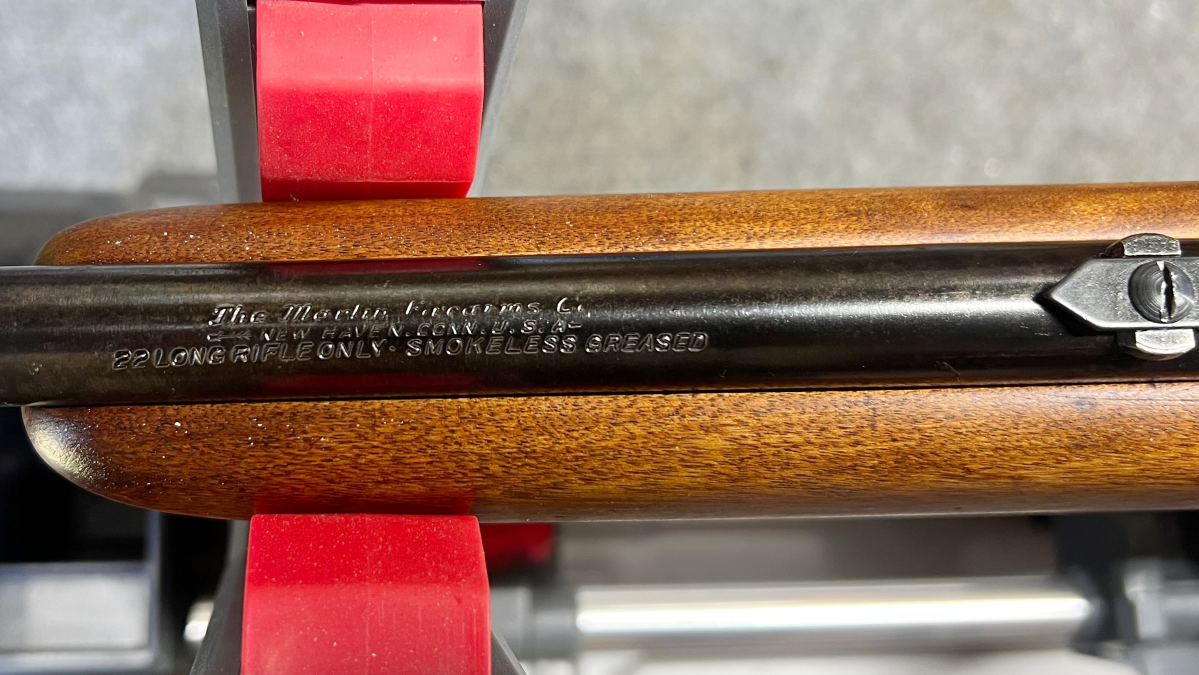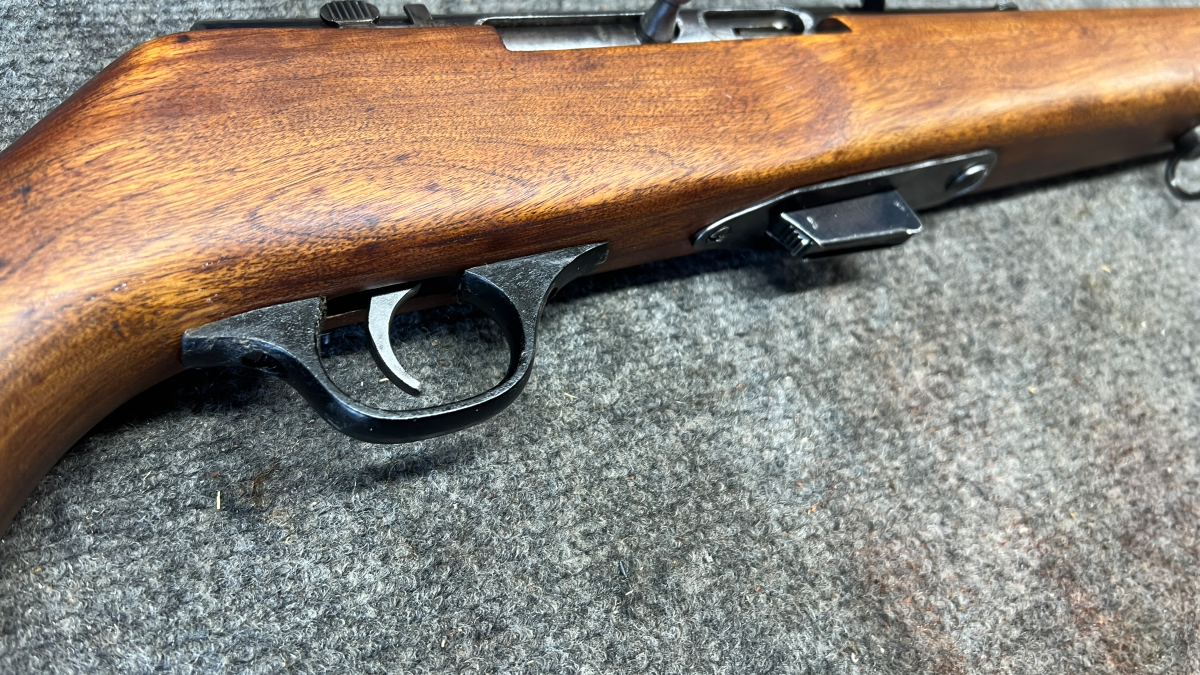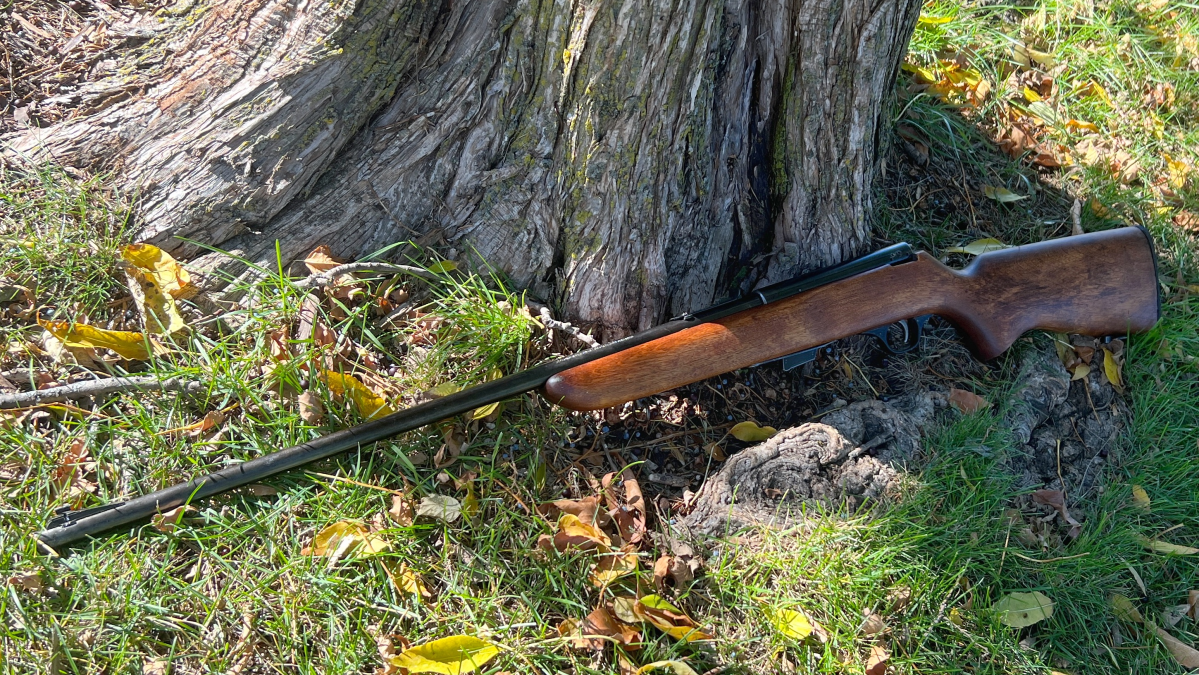Welcome, if you are a newcomer to this fun bi-weekly segment of AllOutdoor.com! In parts I and II, we explored the Marlin A1 semiautomatic 22lr in the form of its history and many variations. In part III, we’ll look at the challenges of dating these rifles and potential magazine issues. Now let’s wrap up part II with a look at the Marlin A1 before heading to the range to do some shooting!
Recent Content in Curious Relics:
- Curious Relics #079: The Automatic 1 – Marlin A1 Part II
- Curious Relics #078: Back From The Dead – Marlin A1
- Curious Relics #074: A Historic Gem – The Spanish Ruby
- Curious Relics #075: A Dime a Dozen – The Spanish Ruby Pistol
- Curious Relics #076: Ruby in The Rough – Spanish Ruby Pistol
- Curious Relics #077: Ruby at The Range – Spanish Ruby Pistol
Welcome to our recurring series of “Curious Relics.” Here, we want to share all of our experiences, knowledge, misadventures, and passion for older firearms that one might categorize as a Curio & Relic – any firearm that is at least 50 years old according to the ATF. Hopefully along the way you can garner a greater appreciation for older firearms like we do, and simultaneously you can teach us things as well through sharing your own expertise and thoughts in the Comments. Understanding the firearms of old, their importance, and their development which lead to many of the arms we now cherish today is incredibly fascinating and we hope you enjoy what we have to share, too!
Dating: Marlin A1
Skipping ahead a little I can tell you that without your grandpappy’s receipt from the local hardware store, you are unlikely to ever know the exact year of manufacture for your Marlin A1. With some insight from our last part covering variations, we can make some assumptions which will have to do in most cases.
Upon initial inspection, key indicators on the rifle’s stock can reveal details about its age. If the stock is walnut with a long, grooved forend section, this suggests an early 1936 model when this style was in use. Stocks from 1937-1941 transitioned to a smoother finish but retained a metal trigger guard and takedown knob. If the stock has an enlarged “beaver tail” shape and fluted comb, the rifle likely dates between 1941-1946 when this variant appeared.
The sights and safety components also changed over time. Pre-1941 versions had a safety on the rear of the receiver, while later models switched to the right side. Target models designated A1E or A1DL came equipped from the factory with specialized peep rear sights and hooded front globes. Determining if these sights are original or aftermarket additions can provide valuable clues.
Finally, inspecting the metal surfaces for markings can narrow down the manufacturing timeframe. Roll marks with safety warnings and proofs of regulators like “Smokeless Greased” can also indicate certain date ranges. Consulting databases, collectors’ forums, or Marlin’s records can help decode these symbols.

By thoroughly documenting the components and markings that correspond to known years of production, an approximate date of manufacture can be deduced. A careful study of the physical attributes offers the most concrete evidence.
Specifications: Marlin A1
The Marlin A1 is a semi-automatic .22 LR rifle produced from 1936 to 1946, replacing the controversial open-bolt Model 50 with a closed-bolt design. Over its decade of production, the A1 saw incremental changes and variations that balanced performance, cost, and compliant recreational rifle design. The model bridged a niche audience to more mainstream post-war shooters through Marlin’s flexible engineering and alignment with evolving civilian market expectations. Notable specifications:
- Years Produced: From 1936 – 1946
- MSRP in 1939: $12.60 in 1939 (equals $267.12 in 2023)
- Operating System: Semi-Auto, Closed Bolt
- Chambering: 22 Long Rifle
- Barrel Length: 24 Inch, Tapered, Ballard Rifling
- Overall Length: 41 Inches
- Capacity: 6 Rounds
- Weight: ~ 6lbs
- Front Sight: Windage Adjustable Ramp w/ Silver Bead
- Rear Sight: Adjustable Rear Sight or Short-based (S-13) Marlin 12R Peep (depending on variation)
- Stock: Walnut
Parts and Accessories: Marlin A1
Marlin A1 rifles have few aftermarket accessories. Magazines for one thing are risky business. The Marlin A1 would use the same magazines as its bolt action counterpart the Marlin 81. However despite modern reproduction magazines existing they seem to have a reputation for feeding issues. The feed ramps are a slanted red or orange plastic instead of a more flat metal one.

Beyond magazine hurdles parts are not terribly scarce for the old A1. Numrich leads the charge in variety while eBay continues to have the occasional roll of the dice. Popperts has only a couple pieces but importantly as of this article, they are a source of a firing pin.
End of Part III: Marlin A1
The Marlin A1 remains a fascinating study of balancing compliant design, cost, and performance in a shifting landscape of regulations and public attitudes. Despite its short run, the model displayed Marlin’s adaptive engineering and bridged niche models to the mainstream civilian sporting rifle market. This cemented Marlin’s reputation for quality, affordable rimfire rifles and paved the way for later successes like the later Model 60. See you at the range in the next one!

In closing, I hope our Curious Relics segment informed as well as entertained. This all was written in hopes of continued firearm appreciation and preservation. We did not just realize how guns were supposed to look and function. It was a long and tedious process that has shaped the world we live in. So, I put it to you! Is there a firearm out there that you feel does not get much notoriety? What should our next Curious Relics topic cover? As always, let us know all of your thoughts in the Comments below! We always appreciate your feedback.
The post Curious Relics #080: The Marlin A1 Semiautomatic 22LR Part III appeared first on AllOutdoor.com.
